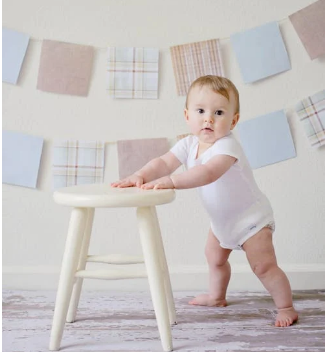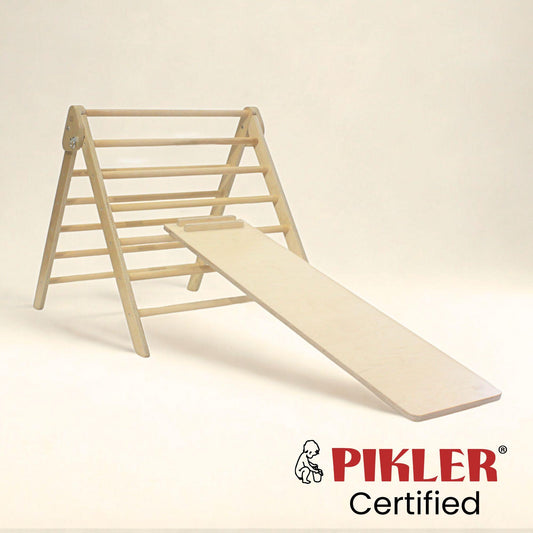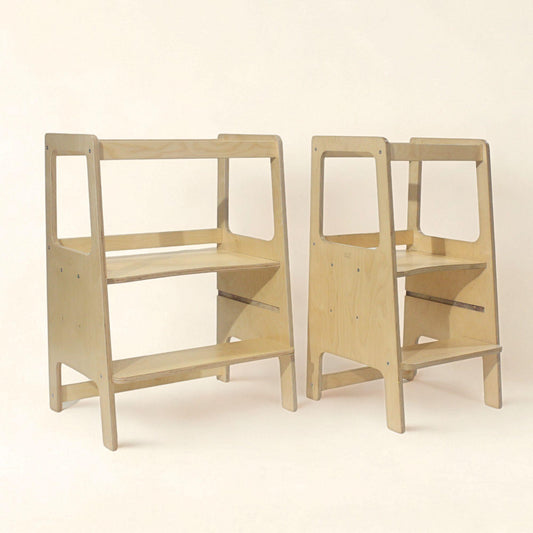
Growing with Style: Selecting Age-Appropriate Children's Furniture for Longevity
Share
Creating an inspiring and supportive environment for children is paramount, with furniture playing a crucial role in this setting. Through carefully chosen pieces, we can ensure the furniture serves practical needs and grows alongside the child, enriching their developmental stages with fun and functionality.
Understanding Child Development and Furniture Needs
As children transition from infants to toddlers and preschoolers, their furniture needs evolve. These changes are dictated by various developmental milestones, requiring an environment that adapts to their growing demands.
Infants: Engaging with the environment during infancy is about discovery and sensory development. Furniture for infants should be easily accessible at ground level, promoting safe exploration. Soft, rounded, and sturdy pieces prevent accidents while supporting mobility, such as pulling up or crawling.
Toddlers: Toddlerhood is characterized by boundless energy and curiosity. Furniture for toddlers must be exceptionally sturdy to withstand climbing and other robust uses. At this stage, versatile furniture that can facilitate multiple activities like puzzles, drawing, and building with blocks is incredibly beneficial.
Preschoolers: As children transition into preschool, their furniture should encourage self-reliance and readiness for academic activities. Lowered shelves that allow easy access to books and craft materials and tables and chairs suited for writing and drawing cultivate independence while supporting their physical growth. This stage calls for furniture that not only serves educational purposes but also adjusts to their size as they grow towards school age.
A deep understanding of these phases is essential for selecting furniture that complements a child's growth and ensures its continued relevance and utility.
Criteria for Selecting Long-Lasting Children's Furniture
Selecting furniture that withstands the test of time involves considering the following:
- Adjustability: The capacity to adapt to a child's growing height and abilities.
- Durability: Strong materials capable of enduring daily adventures.
- Safety: Features like rounded corners, stable construction, and non-toxic finishes.
- Eco-friendly Materials: Choices that respect the planet, offering a safe and sustainable environment for children to thrive.
Examples of Age-Appropriate Furniture That Grows with Children
Providing examples helps translate criteria into actionable choices:
Tiered Bookshelves
Tiered bookshelves are not just for storage; with their front facing design they invite young readers to explore the world of books independently. Shelves that once housed board books can adapt to accommodate school-level reading materials, making these furniture pieces great long-term investments. Their accessibility encourages organization and selection skills, empowering children to make choices.
For Infants: Low-lying Shelves

Interactive Learning: Learning Towers

They provide a secure platform for children to stand at adult-height surfaces, engaging in cooking or craft activities alongside family members. This inclusion fosters an early sense of involvement and competency, and the design typically allows for height adjustment, making it a versatile piece that can be used for multiple growth spurts.
General Seating and Activities: Tables and Chairs
Tables and chairs are cornerstone pieces for children's furniture that genuinely grow with the child. Starting from toddlerhood, these pieces can adjust height to accommodate the child's needs for drawing, writing, and other activities well into their school years. Durable construction ensures that these versatile pieces stand the test of time, while their adjustability supports correct posture development across various ages.
Implementing Style and Personalization
Integrating playful styles and personal touches into functional pieces enables children to take pride in their individual spaces, keeping the environment vibrant and stimulating creativity.
Final Thoughts
Selecting versatile, durable, and stimulating furniture supports and enhances a child's development and joy. Thoughtful choices ensure these essential pieces adapt to the child's needs, fostering an environment ripe for growth and imagination.
Consider longevity, functionality, and adaptability when choosing furniture for your child's space. The right pieces not only fulfill immediate requirements but promise an enriching, evolving backdrop to a child's journey of growth. Reflect on how each furniture piece can contribute to an environment that shapes your child's developmental years positively and imaginatively.
Author Bio

Andrea is currently the head of content management at SpringHive Web Design Company, a digital agency that provides creative web design, social media marketing, email marketing, and search engine optimization services to small businesses and entrepreneurs. She is also a blog contributor at Baby Steps Preschool where she writes storytime themes, parenting tips, and seasonal activities to entertain children.






